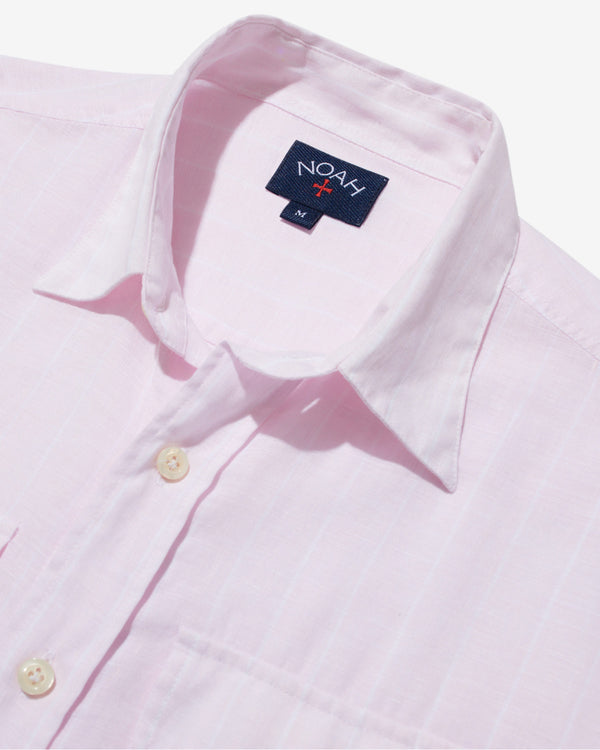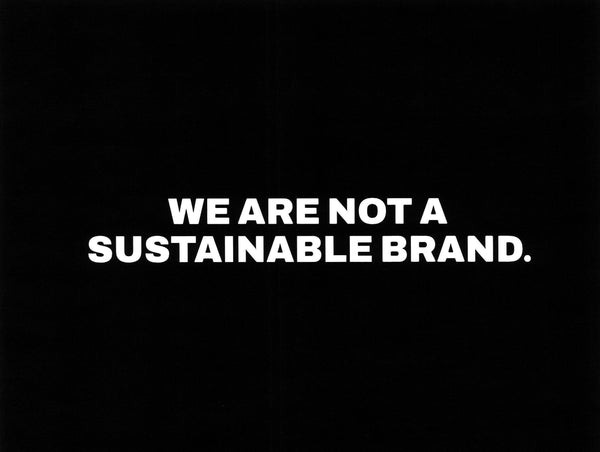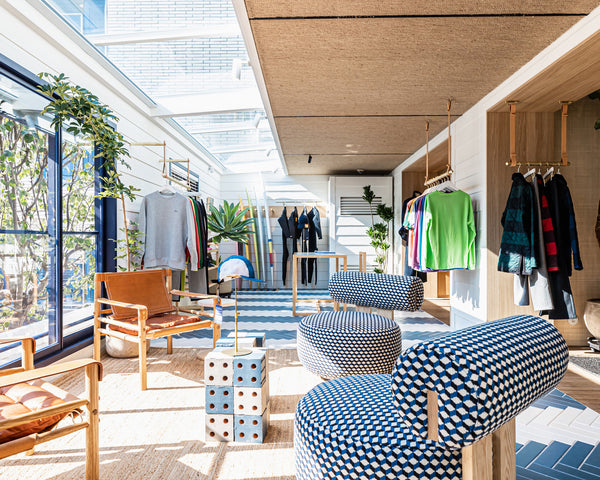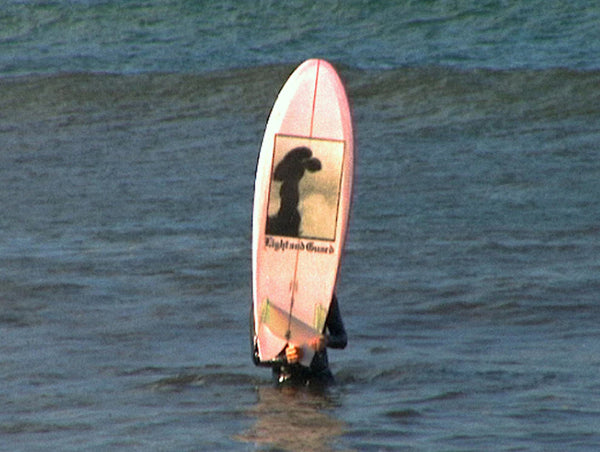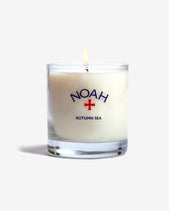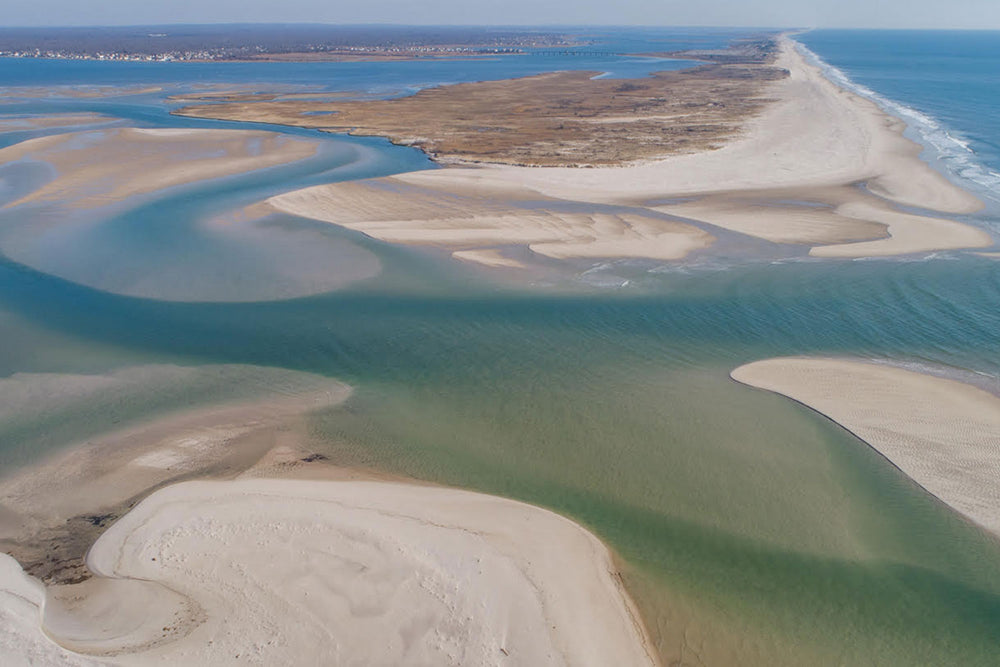We highlighted four separate hazards facing our oceans in our SS20 lookbook: No Fish, No Future; Tide-Turning Toxic Beaches; Sharks are Slaughtered, and today’s issue: Swim at Your Own Risk.
The water is a way of life for most Long Islanders, but if you grew up there after World War II, you’ve been witness to a once superabundant coastal ecosystem brought to its knees in the space of a few generations. Clam, oyster, and fish populations were wiped out. Garbage floated down the rivers that fed the bay. Beaches were labeled too polluted to swim in, and brown tides poisoned the coastline.
The rapidly unfolding environmental disaster was something everyone knew was happening, but no one knew what to do about it. That is, until Save The Great South Bay was founded 8 years ago. Perhaps the most important thing about it is that it was created by ordinary people. It began with a conversation about how the coast that had figured so prominently in their memories was a shadow of its former self. It was time to do something about it.
We talked to Robyn Silvestri about the history of STGSB and its current initiatives. Noah is proud to support this citizen-driven organization as one of our target 1% for the Planet partners in 2020.

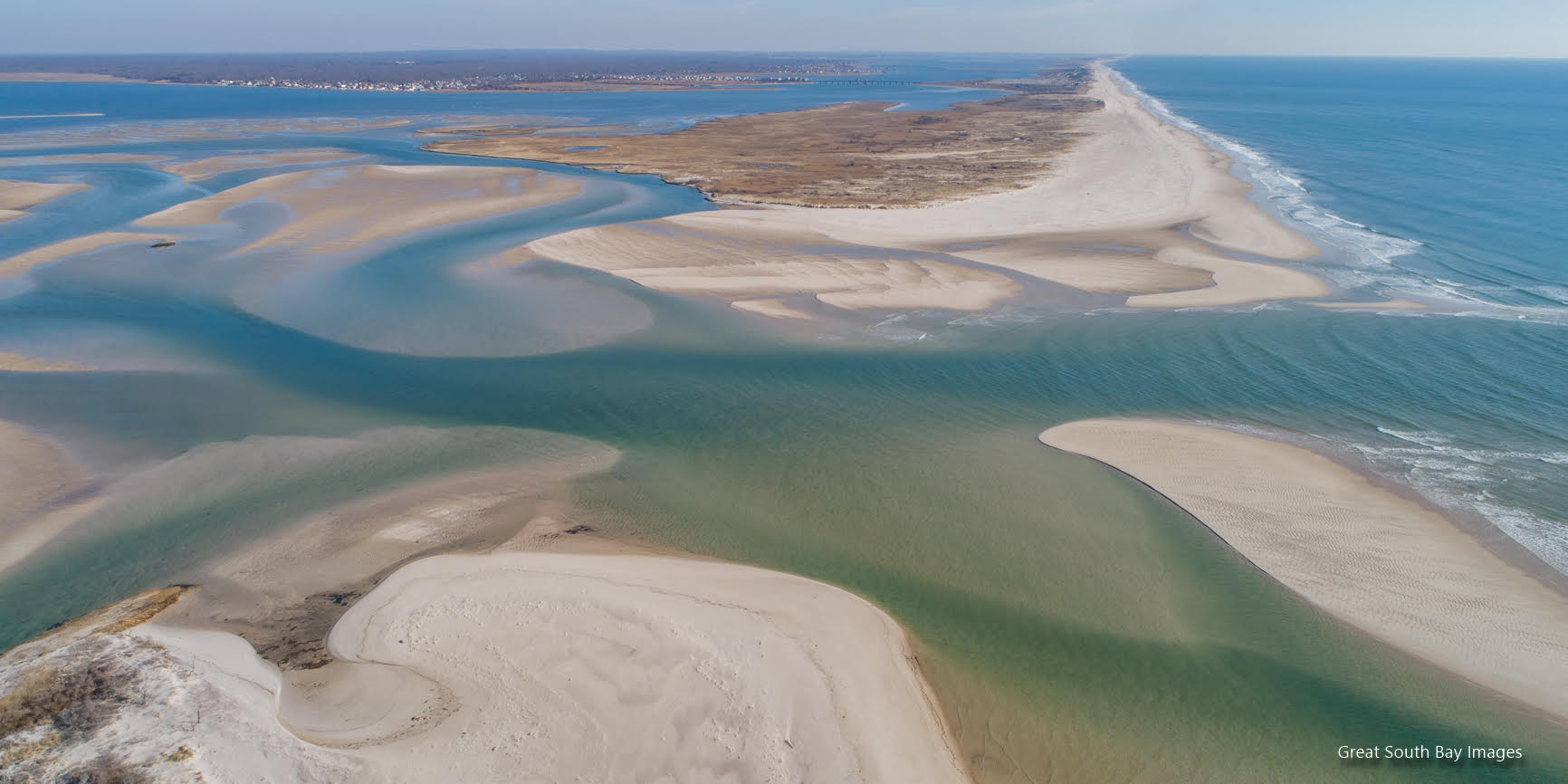
Can you give us an overview of Save The Great South Bay?
Save The Great South Bay Inc. is a 501(c)3 nonprofit dedicated to the revitalization of Long Island’s Great South Bay. We’re made up of past and present South Shore baymen, fishermen, boaters, paddleboarders, surfers, sailors, environmentalists, civic associations, schools, and marine scientists, all working together.
When was STGSB founded?
The cause began on August 4th, 2012. The Sayville High School Class of ’77 was celebrating their 35th reunion at the late, lamented Grey Horse Tavern in Bayport. Two alumni found that all they could talk about was how the bay we’d all grown up on was dying. A few weeks after that conversation, the Facebook Group Save The Great South Bay was established. It now has 14,000 members.
What prompted the need for an organization like STGSB to exist?
What had happened to our bay shocked and disgusted us, and we realized it represented a longstanding environmental crisis on Long Island. We reached out to scientists and locals alike, and began a conversation about how we could restore our bay and what actions needed to be taken.




What was the most detrimental or devastating time for the Great South Bay?
Ten weeks to the day after we founded Save The Great South Bay, Hurricane Sandy hit, and made us understand how truly vulnerable we were. It wasn’t just that this once abundant bay was now barren of clams–the problem was much larger than that. Decades of building on flood plains and bulldozing marshes had severely compromised our coastal resilience. The eelgrass beds and marsh islands (which, in the past, helped mitigate the effects of wave action), had been decimated. Also, the rapid loss of trees and natural habitats on the mainland meant polluted runoff became an enormous problem during a big storm, since there was so little organic matter to soak it up.
Can you tell us about your different Programs?
We are lucky to have a lot of passionate, dedicated people working with us who’ve helped institute these hyper-local programs:
1. Creek Defenders:
There are some 50 creeks flowing into the bay across 16 South Shore towns and villages. Without healthy creeks, we cannot have a healthy bay. To that end, we’ve appointed a local steward, a Creek Defender, in each of those areas. The program brings together local South Shore residents, schools, and civic and environmental groups to clean and protect our creeks in every community from Massapequa to Mastic.
2. Habitat Restoration:
This goal here is to reintroduce bivalves strategically to the bay and its estuary so these filter-feeders (like oysters and ribbed mussels) can help clean the water. We advocate for living shorelines and marsh restoration, and work with the marina industry to help promote ‘green’ policies.
3. The Bay-Friendly Yard Pledge:
STGSB launched this initiative with Grassroots Environmental Education, and now there are thirty other local environmental groups participating and advocating for bay-friendly, pesticide-and-chemical-feritlizer-free yards. We are also focusing on habitat restoration by recommending that only native species of vegetation be planted, particularly ones that are beneficial to local fauna (birds, butterflies, etc.) and help highlight Long Island’s indigenous beauty.
4. Science First:
We promote a systematic, scientifically-driven approach to the bay’s management that’s not influenced by politics. A healthy bay means a healthy economy for the South Shore, as well as the preservation of a crucial public good for future generations. We want our children and grandchildren to be able to fish, clam, swim and boat on these waters just like we did when we were growing up
What's next for STGSB, and how can people get involved?
In 2019, we conducted over a dozen organized cleanups. For 2020, in honor of Earth Day’s 50th anniversary, we set a goal of 50 cleanups. To get involved in a cleanup, visit our website: www.savethegreatsouthbay.org. Local stewardship, community outreach, education, and advocacy are the keys to the future of Long Island. To the Bay!




Learn more about STGSB: savethegreatsouthbay.org
